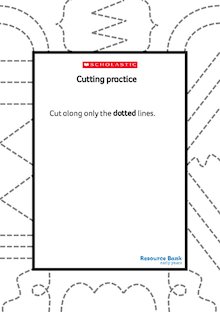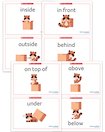Essential Experiences – Indoors
Add to My Folder
‘Essential experiences’ is a fascinating topic to think about. With so much for the young child to discover and learn, we could argue that every experience is essential. Nevertheless, as practitioners, we do need to prioritise certain skills, competencies and bodies of knowledge – and offer experiences that will enable children to develop as curious, responsible and rounded human beings.
Given carefully chosen resources and appropriate adult support, most children will find their own essential experiences. If allowed the space and the time, they will fully engage with whatever interests them – and when this happens, we can be sure that positive learning and development are taking place. Apart from offering a well-planned and curated environment, the role of the adult is to scaffold and guide each child according to their needs. Child-initiated activity is essential, but how might we step in and help the child develop, move forward and achieve more than they might have done alone?

The following activities are just some examples of what we might call ‘essential’. Weaving in and out of every activity are opportunities to develop skills and abilities, such as choosing, self-regulating, caring for the self, exploring feelings, co-operating, considering others, assessing and making changes, thinking, listening, asking questions and discussing. There are also some key concepts and generic activities that appear within many of the essential experiences in the list below, including similarity, difference, change, cause and effect, heuristic play, messy play and sensory exploration.
This list is just a starting point. What other essential indoor experiences would you add?
Art and craft
Art and craft in the early years is all about developing knowledge of different tools and resources, leaning how to use them and having fun with paint, crayons, paper, glue and scissors.
- Introduce paint handling techniques to minimise frustration and maximise success; for example, wiping the brush against the opening of the paint pot and colour coding pot lids and brush handles.
- Once children can distinguish between colours, introduce mixing new colours and making colours paler/darker with white or black. Offer metallic, pearlescent and fluorescent paint.
- Practise cutting and sticking skills. Make cutting cards with straight, wavy and zigzag lines (see resources). Card makes a sturdier background for gluing than paper, and it’s easier to put the glue on the card than the item.
- Introduce the keys to successful printing: cover the entire surface of the printing item with paint, hold the item still on the paper and hold the paper down with one hand before lifting up the item.
- Enable children to print with small items (paper clips, buttons) and string by gluing them onto easy-to-hold wood blocks.
- Introduce children to a wide range of collage papers and fabrics, just a few at a time to avoid overwhelm. Take the opportunity to explore pattern and texture, crumpling, tearing and folding.
- Look out for unusual ways of using everyday resources; for example, putting wax crayon shavings in a fold of sugar paper and ironing to make a symmetrical melted wax pattern.
Already a member? Sign in below.
Published 20 February 2020
Reviews
You need to be signed in to place a review.





